Autonomous sewer systems for a private house. The device and principle of operation of autonomous sewage in a private house
More and more more people who are looking for an opportunity to live close to nature, choosing between an apartment and own house, stop at the second option. If you want the house to be as comfortable and convenient for living as cozy apartment, initially you will need to take care of the uninterrupted supply of water and the installation of an autonomous sewage system.
An autonomous sewerage system in a private house has a key advantage - it is completely independent of a centralized system. Therefore, in some cases, you do not need to pay for its use, and when operating more complex systems, the costs will be minimal.
Autonomous sewerage for a country house. What to choose?
The concept of autonomous sewerage implies a system for removing wastewater from a house or store, after which the waste is filtered. At the moment, there are several systems for water purification. Some of them can be easily equipped on your own, but installing more complex ones will require the involvement of specialists. In this case, the installation cost will be much higher.
Autonomous sewerage for a private house, in essence, there are two types:
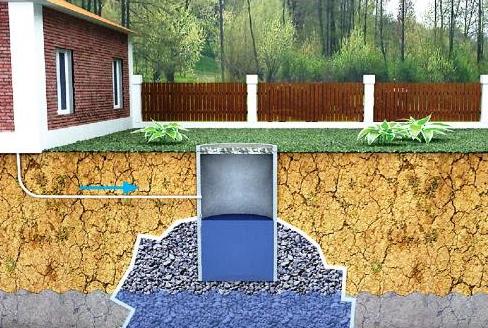
As for the design of the sewer, it can also be divided into types:
- The pressure system involves the use of pumps connected to the pipeline for pressure and transport of waste. Due to constant pressure, the length of the sewer can be set at your discretion, making it as far from the house as possible. This solution has two drawbacks - the complexity of installation and complete dependence on electricity.
- Self-flowing system. Its essence lies in the fact that the transportation of waste is carried out due to their own pressure. This type of sewerage is cheaper, simpler and does not depend on energy. On the other hand, it cannot be located far from home.
Installation of autonomous sewerage in a private house
Autonomous sewerage system country house in any case more economical than central system or a permanent order of a vacuum truck. Since its installation using drain pit and a gravity system is time consuming, but does not require special skills and abilities, it is better to consider installing a septic tank.
The main features of the installation of a septic tank:
- In the case when water supply is installed in the house, there is a bathroom and a heater, you need to expect that 150 to 200 liters of water will be required for 1 person. Therefore, before ordering a septic tank, you need to calculate how many people live in the house and their daily water consumption rate.
- The walls for installing a septic tank can be paved with brick or reinforced concrete rings. If stone is used, then they need to be covered cement mortar or asphalt. The reservoir must be located far from wells with drinking water and underground.
- The cleaning system may consist of several wells, where each performs its own function - cleaning or filtration.
It is worth remembering that a septic tank is not a complete cleaning solution and is only one element of the sewer. This is an airtight container that is used to collect wastewater, and the degree of water purification is 70%. After draining, the waste from the septic tank undergoes additional cleaning and filtration. The resulting water is released into the soil.
The septic tank consists of three components. The first is connected to sewer pipe from the exit of the house and is intended for pre-treatment, the second is accompanied by the decay chemical compounds with simultaneous release of methane, and the third stage completes the wastewater treatment. Due to the use of biopreparations that accelerate the decomposition process, the system destroys bacteria, fat secretion, etc. The sump must be well ventilated and protected by waterproofing.
The resolution of drainage wells depends on the volume of runoff and soil. The walls should be paved with brick, crushed stone, concrete rings, gravel, expanded clay or brick.
Conclusion
Autonomous sewerage for a country house is modern system waste treatment. At correct installation you can get it high quality waste processing. Since the use of an autonomous sewer will require less effort than when connected to a central sewer system, when choosing it, special attention should be paid to power and efficiency.
The company "Vodokanalsbyt" has been installing autonomous sewage systems for summer cottages, private houses, as well as various enterprises for many years. We have completed over 8500 projects of varying complexity in Moscow, Moscow region and regions.
Quite often, the owner of a private house is faced with the question of effective drainage from the building to the outside, when it is impossible to connect to the central network. It has been repeatedly proven in practice that best option in such a situation - the arrangement of an autonomous sewage system on the site.
Building such a system on your own requires a lot of time. At the same time, the private trader must have sufficient experience in arranging a separate sewerage system. Often, many independent attempts end with the fact that everything has to be redone again, and this is an extra financial and labor cost. The best option is to immediately entrust the installation of a sewer system for a summer residence to a specialized organization. We guarantee high quality of work and strict observance of contractual obligations.
Attention buyers! The Factory's warranty does not apply to equipment purchased and improperly installed by an unofficial dealer (dealer)! Do not purchase products from resellers! What should be on the site official dealer. CHECK!
Popular models of sewer septic tanks
Unilos "Astra"
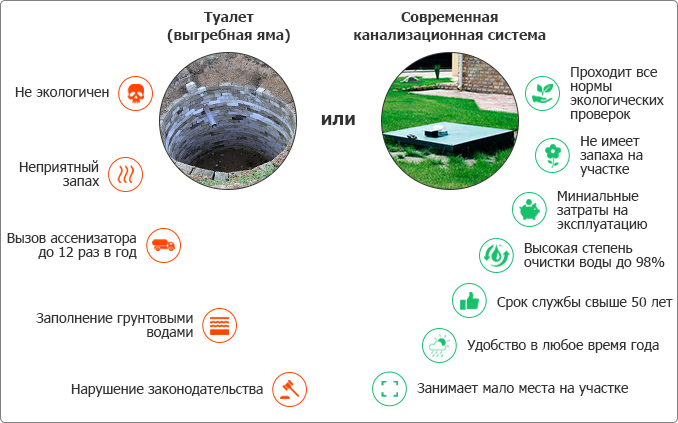
Comparative characteristics of types of sewage
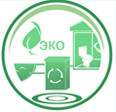
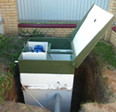
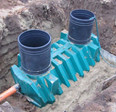
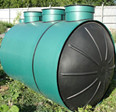

| Autonomous sewerage biological treatment ("Topas", Unilos "Astra") |
Septic tank for soil treatment (tank) | Storage septic tank (barrel) | concrete rings | |
|---|---|---|---|---|
| The cost of a septic tank | 85 000 R | 30 000 R | 30 000 R | 20 000 R |
| Installation cost | 22 000 R | 50 000 R | 40 000 R | 25 000 R |
| Calling a vacuum truck | 0 R | 4 times a year | up to 12 times a year | 4 times a year |
| Addition of bacteria | 0 R | 4 times a year | Not needed | 4 times a year |
| Cleaning degree | 98 % | 60 % | 0 % | 30 % |
| Smell | is absent | present | strong resistant smell in the area |
strong resistant smell in the area |
| Impact on the environment | does not affect | the average | does not affect | strong |
| General expenses in first 5 years* |
107 000 R | 115 000 R | 170 000 R | 105 000 R |
* Average value. May vary depending on operating conditions.
The cost of installation of autonomous sewerage in the house
We are representatives of the manufacturer.
The product warranty is fully preserved.
Under the protection of the state of the Russian Federation.
There is an SRO license.
Many years in the market of treatment facilities.
More than 1000 orders per year.
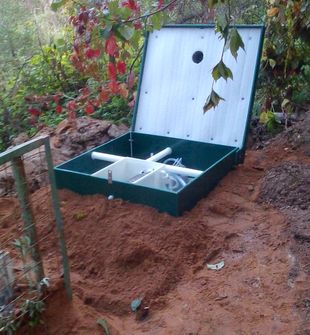
STAGES OF WORK
Consulting
by phone
Departure to the site.
Selecting an installation location
Delivery and installation
septic tank
Acceptance of work performed
| Treatment plant model | Number of users | Station Retail Price | Discount | Discount Station Price | The cost of the Station with turnkey installation | Additional discount for preferential group |
|---|---|---|---|---|---|---|
| TOPAS-S4 | 4 people | 78900 | 20% | 63120 | Stock | -10% |
| TOPAS-S4 PR | 4 people | 88700 | 20% | 70960 | Stock | -10% |
| TOPAS-S5 | 5 people | 89700 | 20% | 71760 | Stock | -10% |
| TOPAS-S5 PR | 5 people | 102000 | 20% | 81600 | Stock | -10% |
| TOPAS-S6 | 6 people | 95300 | 20% | 76240 | Stock | -10% |
| TOPAS-S6 PR | 6 people | 105900 | 20% | 84720 | Stock | -10% |
| TOPAS-S8 | 8 people | 109700 | 20% | 87760 | Stock | -10% |
| TOPAS-S8 PR | 8 people | 121900 | 20% | 97520 | Stock | -10% |
| TOPAS-S9 | 9 people | 114500 | 20% | 91600 | Stock | -10% |
| TOPAS-S9 PR | 9 people | 124700 | 20% | 99760 | Stock | -10% |
| TOPAS-S10 | 10 people | 141900 | 20% | 113520 | Stock | -10% |
| TOPAS-S10 PR | 10 people | 153900 | 20% | 123120 | Stock | -10% |
| TOPAS-S12 | 12 people | 145900 | 20% | 116720 | Stock | -10% |
| TOPAS-S12 PR | 12 people | 158300 | 20% | 126640 | Stock | -10% |
| Unilos "Astra" 3 | 3 people | 73000 | 20% | 58400 | Stock | -10% |
| Unilos "Astra" 4 | 4 people | 78900 | 20% | 63120 | Stock | -10% |
| Unilos "Astra" 5 | 5 people | 89500 | 20% | 71600 | Stock | -10% |
| Unilos "Astra" 6 | 6 people | 95200 | 20% | 76120 | Stock | -10% |
| Unilos "Astra" 7 | 7 people | 106000 | 20% | 84800 | Stock | -10% |
| Unilos "Astra" 8 | 8 people | 109500 | 20% | 87600 | Stock | -10% |
| Unilos "Astra" 9 | 9 people | 114400 | 20% | 91520 | Stock | -10% |
| Unilos "Astra" 10 | 10 people | 141700 | 20% | 113360 | Stock | -10% |
| Unilos "Astra" 15 | 15 people | 172000 | 20% | 137600 | Stock | -10% |
* Terms of the PROMOTION find out by phone
The share price includes:
Departure of a specialist to draw up an estimate (free of charge)
TOPAS septic station (eligible model)
1. Preparation of a pit for the station.
2. Preparation and laying of the highway 4 l.m. supply and 2 p.m. outlet pipe
3. 15 m of electric cable (VVG 4x1.5) and laying it in the HDPE pipe.
4. Lowering the station into the pit with further sanding and filling with water.
6. Sealed soldering of the inlet and outlet pipeline.
7. Connecting the station to the electrical cable.
8. Launching the station and commissioning.
ATTENTION: The cost of water and sand is paid by the customer. If it is necessary to install formwork, its cost is paid separately!
Autonomous sewerage device of a private house
The drainage system for drains from a private dwelling consists of the following main elements:
- cleaning devices. current trend- this is the use of a septic tank for a summer residence instead of a cesspool. Firstly, the degree of wastewater treatment increases (up to 98%). Secondly, maintenance and the procedure for pumping out sludge are simplified;
- indoor piping networks, including plumbing fixtures. Knowing the exact number of water consumers and the volume of discharges is important for an accurate calculation of the performance of the treatment plant;
- an external pipe network that connects the sewer outlet from the house to the septic tank, and also takes the treated drains outside the site.
The first step in cleaning the drains of a private house is their treatment in a septic tank. Here, the liquid goes through the clarification stage, when contaminants are deposited in the form of sludge at the bottom of the septic tank. The second stage is the filtration of already pre-treated wastewater at the outlet of the facility. For this, post-treatment fields, filter wells, etc. are being equipped.
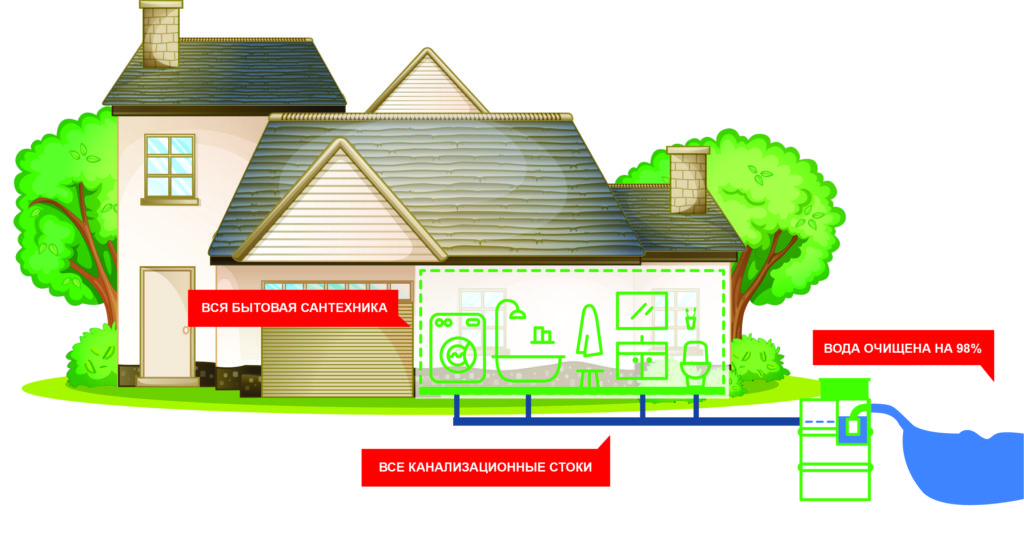
Installation of an autonomous sewage system for a summer residence
- The device of the system indoors. Can be performed in hidden and open version. In the first case, it provides good protection pipes from external influences. With an open version of the arrangement, there is free access to the elements of the system.
- Outside lining. To lay pipes on the site of a private house, trenches are dug with a slight slope towards the septic tank. The width of the ditch should ensure the convenience of the work. The pipes are laid on sand cushion. Connections to the output from the house and the input to the septic tank should not be rigid. Backfilling of the trench is carried out first with sand, then with soil.
The best option for resolving the issue of draining a drain from a home sewer is a tie-in to a city highway. Difficulties with connection arise when the common pipe is at a great distance, or the location of the site does not allow a direct tap to the utility network. In such a situation, it will be necessary to study how an autonomous sewage system works and design a private local sewage treatment plant.
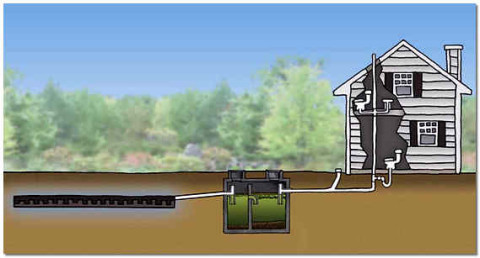
Autonomous system in country house
Autonomous sewage is the disposal of wastewater directly on the site adjacent to the house, or the creation of one local system to serve multiple buildings. There are 3 ways to build an autonomous home sewer system:
- Drain hole.
- Septic.
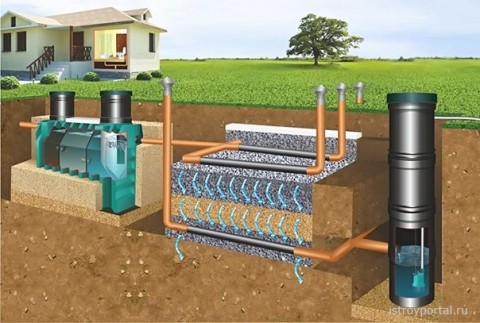
Septic tank with output through the filtration field to the receiver
- Cleaning station - VOC.
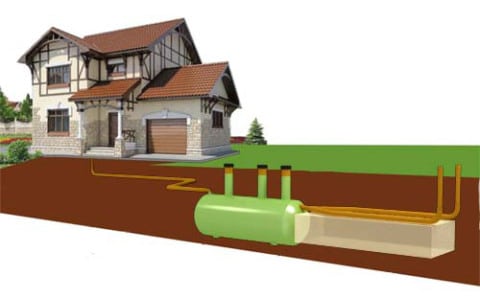
Photo: private autonomous sewage system based on VOC
Cesspools: the simplest type of sewage
A budget and simple version of a home sewer device is digging a drain hole. The principle is simple: liquid waste flows through the sewer pipe into a container. If the tank is sealed, then the waste accumulates in the pit until pumping out, which is carried out every 2 to 4 weeks, depending on the intensity of the use of the sewer and the internal volume of the tank.
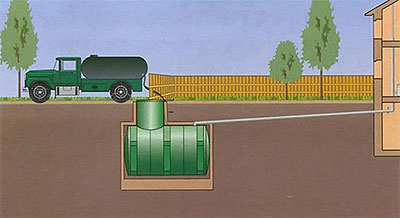
Regular pumping and bad smell: cesspool
There is another type of cesspool - filtration tanks. A container without a bottom is installed in the pit, and the lower part is covered with sand and gravel, through which the drains gradually seep into the ground. Installation of filter wells without pre-cleaning runoff is prohibited. It is possible to equip a pit without a bottom only for maintenance summer cottages with 1 - 2 points of water use: shower and toilet. Main disadvantage drain pits - the need for regular cleaning. It is practically impossible to avoid the appearance of a persistent unpleasant odor that does not disappear even after disinfection of the receiving containers. The installation of pit latrines is prohibited in residential urban areas, near neighboring plots and buildings.
Septic Tanks: Improved Drain Tanks
A septic tank is the best option for installing an autonomous sewage system in a country house or in a country house, if the number of residents does not exceed 3-4 people, or the house is used for seasonal living.

A septic tank is a structure of several chambers interconnected. Effluent entering the structure goes through at least 2 stages of treatment:
- Mechanical. Inside the chamber, primary settling and stratification of waste occurs: dense substances, solid insoluble masses settle to the bottom. Liquid drains flow into the next compartment.
- Biological. natural process filtration of sewage waste takes up to 3 days. Recycling organic compounds passes in the crust on the surface of the liquid during the activity of anaerobic bacteria.
Bacteria that process waste exist in specific conditions: for life they need a strong film on the surface of the water and the absence of oxygen. During the cleaning process, a large amount of gas is released - to remove methane, septic tanks must be equipped with ventilation with an output to the roof level of residential buildings.
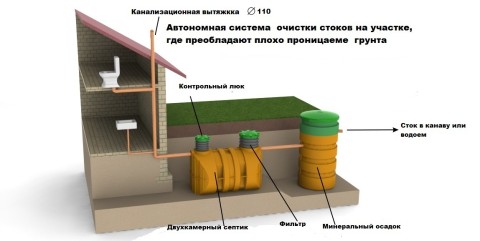
Multi-chamber septic tank on the site
Septic tanks as an autonomous sewage system are used to dispose of wastewater in houses and in areas that are not connected to the mains, or with constant power outages. The system is autonomous and non-volatile. The movement of liquid in the compartments is carried out with the help of an overflow, and the outlet is through the outlet pipe to filtration well or gravel field. Septic tanks with biofiltration systems require regular cleaning. Depending on the type of filter and the amount of waste - up to 1 time in 1 - 2 months.
VOC: complete cleaning stations
Local treatment plants (VOCs) are systems for autonomous sewerage with a maximum degree of purification. The purity of the drain at the outlet is up to 98%. VOCs are volatile systems that require uninterrupted power supply. Factory complexes are equipped with equipment for multi-stage filtration in automatic mode.
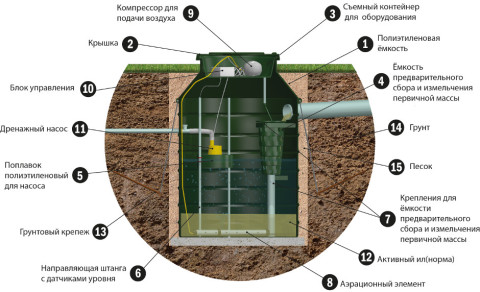
Scheme: complex cleaning station
The principle of operation of an autonomous sewage system is the complex processing of wastewater in the chambers of the station:
- Primary mechanical cleaning. Several types of mechanical filters are installed in the receiving compartment: large particle traps, grease traps.
- Aerobic processing. Biofiltration of pretreated wastewater with aerobic bacteria.
- anaerobic cleaning. Removal of organic compounds in the chamber with anaerobic bacteria.
- Final cleaning. Additional mechanical filtration.
Stations do not require cleaning and special care. The owner needs to inspect the internal chambers once a month. Cleaning of mechanical filters is carried out once every six months, and maintenance and replacement of equipment parts - once every few years.
What you need to know about autonomous treatment plants: the principle of operation and types of systems
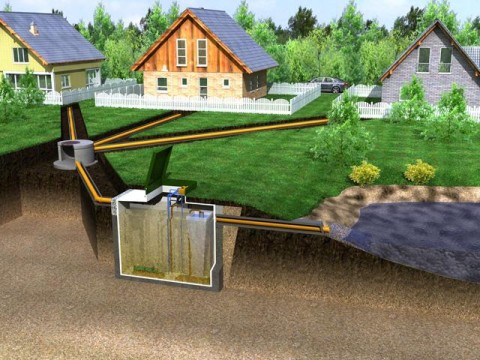
One station can serve several houses
What you need to know in order to select and install an autonomous sewage system without errors? The main parameters that are taken into account when selecting the type of station:
- Average daily volume of water and the maximum predicted consumption during the day: this indicator is needed to determine the volume of the system.
- The quality of the power supply is a determining factor when choosing the type of station.
- Technical characteristics of the site: features of the relief, depth of occurrence ground water.
- The presence or absence of natural reservoirs, ditches.
When choosing a septic tank operating as an autonomous sewage system according to the principle of anaerobic treatment, choose finished structure or design a system of sealed containers on their own.
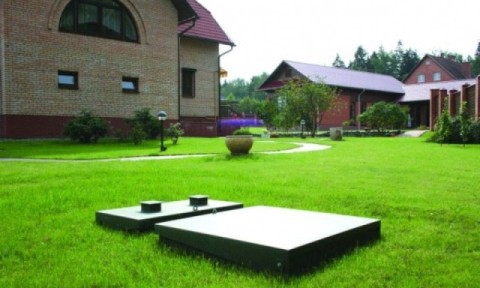
Appearance systems on site
VOC - factory complex solutions, with full training for installation and launch. Installation is carried out by representatives of the manufacturer or construction companies that specialize in engineering communications.
Factory cleaning systems: materials of manufacture and equipment
Tanks for arranging septic tanks and treatment stations are produced in sealed cases made of materials:
- Polymer based acrylic resins. Plastic septic tanks and stations can be made of polyethylene, PVC or fiberglass. For home system it is better to choose multilayer seamless polyethylene or fiberglass. Such containers are not subject to depressurization along the connection lines. The material is corrosion resistant and can withstand chemical substances, completely waterproof.
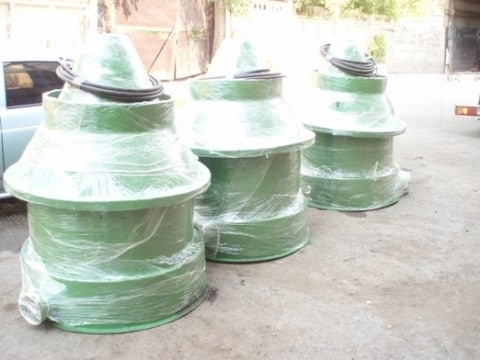
- Metal. Metal tanks are less reliable due to the risk of depressurization. Welds - weakness construction, and regular inspection is impossible, because the container is dug into the ground. Metal tanks require preparation before installation: surface and internal treatment with a protective anti-corrosion compound. Another disadvantage of steel tanks is their high thermal conductivity. Structures dug into the ground backfill needs to be isolated.
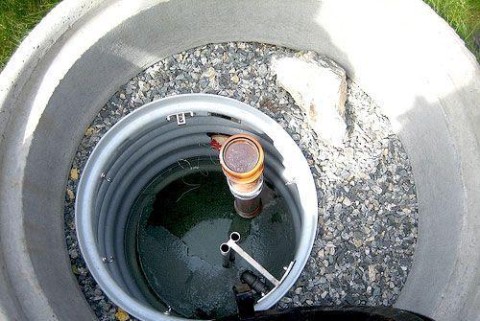
capacity in reinforced concrete ring with sprinkling
When self-designing septic tanks use concrete rings and finished parts made of reinforced concrete. Choose special products for installation in the ground, made from a solution with the lowest degree of permeability.
The mechanism of cleaning and the principle of operation of the sewer
To understand how autonomous sewage works in a private house, you need to understand the cleaning mechanism drain water inside the factory structure. VOC stations are complex systems with division inside into several connected and (or) sealed chambers.
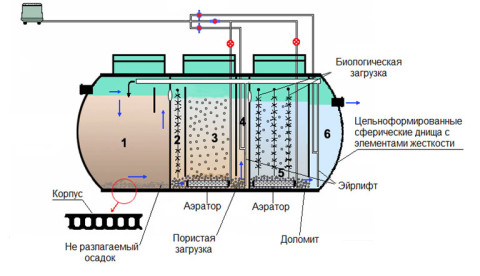
In the first settling chamber, the primary mechanical separation of the waste masses takes place. The volume of the chamber depends on the type of construction and the duration of the drains in the receiver. Mechanical filtration includes the natural settling of insoluble sediment and the passage of water through a mesh removable filter basket. The mesh of the mechanical filter accumulates waste that has fallen into sewer drain: garbage, paper. Additionally, manufacturers install shredders in systems that are equipped with electrical equipment.
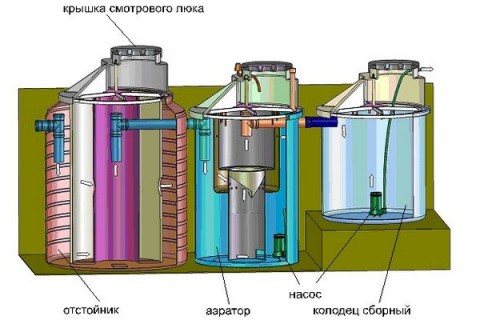
Cleaning mechanism in a three-chamber system
After the mechanical cleaning chamber, the liquid enters the tank with biofilters, where the main processing takes place. Factory designs are produced with active (anaerobic) and aerobic cleaning chambers. There are also systems with combined processing. At the exit from the compartment with biofiltration, the purity of the drain is from 80%. From the biofiltration chamber, the runoff can be discharged directly to the filtration field or to a tunnel. Some systems are equipped with a final post-treatment tank - a compartment with mechanical filters made from minerals of volcanic origin, natural and artificial absorbents.
Biofiltration: use of non-volatile anaerobic type systems
Structures operating on the principle of an active septic tank are installed when it is necessary to provide wastewater treatment without connecting the system to the mains. The design consists of 1 - 2 chambers. Autonomous sewage works continuously, therefore, the volume is calculated based on the fact that it takes 3 days to process the drain.
![]()
Anaerobic treatment in a septic tank
The processing of organic matter is carried out due to the vital activity of bacteria that are artificially colonized in the septic tank (through a sewer drain). Microorganisms live in an airtight film of fat that enters the container along with sewage. During processing, a large amount of heat and gases are released - the waste products of bacteria. Therefore, the liquid level inside the chamber should not exceed 2/3 of the volume, and the gas outlet ensures ventilation tube.
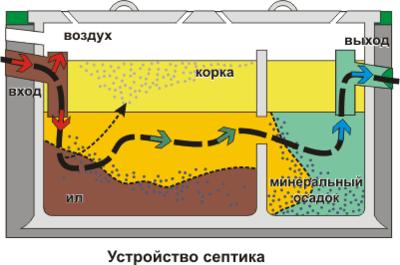
Crust on the surface - a habitat for bacteria
The number of active microorganisms directly depends on the intensity of use of sewage and chemical composition runoff. For high-quality cleaning, up to 3 months should pass from the moment the system is launched. Bacteria are sensitive to chlorine and household chemicals detergents. By regularly draining water from a washing machine or dishwasher, the number of microorganisms can decrease dramatically. Anaerobic systems require regular care: The container of the receiver should be cleaned every few months, leaving up to 1/5 of the volume to preserve the film with bacteria. Cleaning agents based on chlorine and acids must not be used, the amount of household chemicals falling into the drain.
Cleaning in the aeration chamber: how the aerobic biofilter works
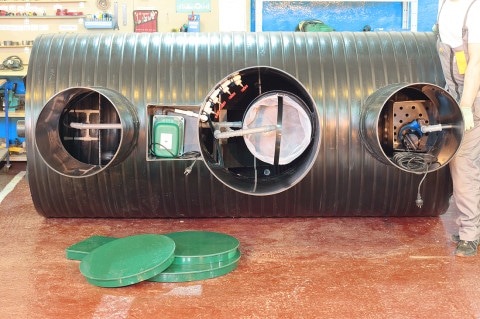
Most LOS are built on the basis of chambers with compressor aeration equipment - aerotanks. The degree of purity of water at the outlet is from 85 to 98%. When setting up stations with a high degree cleaning, there are no problems with obtaining permits - such systems are installed in urban and suburban private houses.

Schematic: wastewater treatment mechanism
The primary treatment chamber, which is located in front of the biofiltration tank, is additionally equipped with grease traps, which contributes to complete wastewater treatment. The biological processing chamber operates with a constant supply of oxygen. To supply air, manufacturers install compressor equipment in the aerotank.
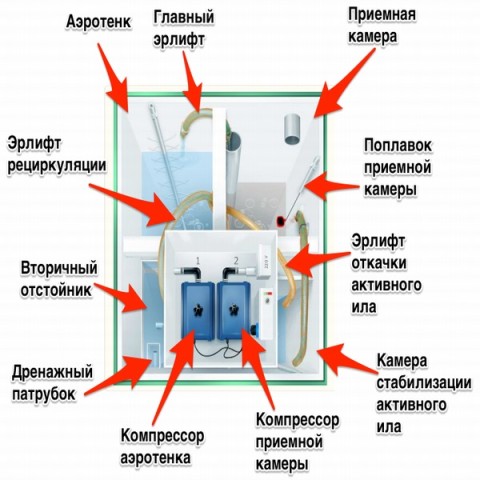
Waste-recycling bacteria live in activated sludge inside the chamber. Their number is naturally regulated. With an increase in the volume of flow or the need to intensify and speed up the cleaning process, the amount of oxygen that is supplied is increased. The adjustment process is programmable. During operation, oxygen is supplied automatically. Aerobic microorganisms are less sensitive to the presence of chemicals in the processed liquid. Therefore, VOCs can be used without restrictions for installation in residential buildings, commercial facilities with intensive use of detergents.
Advantages and features of autonomous stations
Local autonomous systems - absolutely safe home sewage. Advantages:
- Environmental friendliness. The design and principle of operation of autonomous sewage stations make it possible to mount devices in close proximity to buildings in residential areas. There is no unpleasant smell - the containers are airtight, and a ventilation outlet is not needed. There is no risk of contamination of soil, water bodies. In the event of an accident, an alarm will be triggered; if the power supply is turned off, the station can operate in normal mode for several hours.

VOC: no restrictions for installation in a residential area
- Minimum maintenance activities. The system does not require regular brushing. Preventive examinations are carried out once a month. The stations are self-cleaning, there is no need to involve equipment for pumping.
- Durability. Plastic structures serve from 50 years. Internal parts, including elements of equipment in the aerotank, are made without the use of steel. If the drain is brought to the filtration field, then the bulk filter is replaced every 10 years.
How to choose the type and capacity of the sewer system without errors
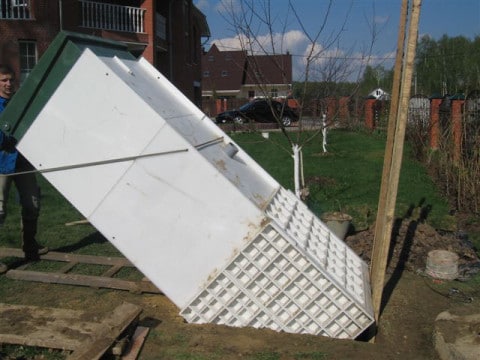
Installation of the factory system on site
When choosing stations for complex treatment, there are no problems. Autonomous systems can be installed on the site without restrictions on the type and composition of the soil, the depth of groundwater. The only parameter that the owner must take into account is the number of people who live in the house. Factory VOCs are produced in different modifications, with different processing volumes. For installation in difficult conditions select structures with an increased installation depth - for laying pipes below the freezing point.
Video: how an autonomous station works
Equipping the sewer for the house, give preference to factory systems with a comprehensive complete cleaning.
